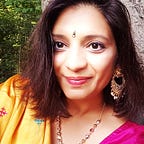Reflections on South Asian Heritage Month 2021
South Asian Heritage Month (SAHM) came to an end on a few weeks ago and I’ve needed to take a break from it. I wrote about the importance of the month here but what I hadn’t discussed was the difficulties of getting senior leaders in my organisation to understand the inequalities or difficulties faced by South Asians. There seemed to be a ‘hierarchy of inequalities’ and a lack of recognition of the huge disparities within the South Asian diaspora. What I found was that South Asians have typically tended to be quieter around issues of unfairness but vocal in smaller groups. Issues are wider than Islamaphobia or requiring translations.
This year, when my intention was to raise awareness and highlight some of the problems faced by South Asians, including the intersectionality and how . I enlisted the help of many people I had spoken to last year and asked them to run sessions. I didn’t know whether the event would be supported so I’d booked all my sessions in the evening unless networks were able to run these as part of their regular monthly session.
I worked on this during my annual leave, evenings and lunch breaks. I didn’t have a separate day allocated. It wasn’t part of my role, but I couldn’t sit back knowing and having experienced the impact of what happens when health workers make assumptions about you. Without going into it in detail; I’m lucky that my little boy and I are here. Like most of what drives me, I want others to have a better experience than I had.
Thanks to similarly enthusiastic colleagues and friends; I managed to fill the whole month with sessions. Here is the list and learning I took from these sessions.
- Presentation to the QI Team: A lot of data is out there already and worth reminding teams of general inequalities as well. In 2019, people from the Pakistani ethnic group were over 3 times as likely as White British people to live in the most overall deprived 10% of neighbourhoods.
- Intergenerational households: Though there can be a lot of support from families for childcare and financially it may be better; there was a cost especially for South Asian women. Women were often expected to continue with household chores alongside having a career and often living with in-laws. This made me consider the representation of South Asian women in our Women’s Network
- Women’s Network: I enlisted the help of two NEDs from outside of the Trust following feedback that there was little female representation of South Asian women at senior roles. Reflecting on this with the network lead later, we noticed a new audience of south Asian women on the call, who had their cameras off and did not speak. I see this as the first stage of engagement — there is clearly interest but more work needed in this area.
- MH Issues effecting South Asian men: A better attended group due to being run at lunchtime.
- Shielding group social: Chai making. I’m lucky to have my mum’s homemade spice mix.
- (Dis)Ability Network: Neurodiversity (ADHD, ASD) is less likely to be picked up in South Asian families, especially girls or families where mother is not fluent in English.
- Panel guest with South Asian Health Foundation: Collective interest and expertise, we need to work together more often to support our communities and spread learning
- Chai & Chat interview with Executive. Having senior visibility is so important in knowing that your voice matters and increased feelings of authenticity toward leadership.
- Chai & Chat Arts — show and tell. SAHM is inclusive and this was proudly led by an Arts Therapist with South East Asian background, who shared her love of Asian theatre puppets.
- Identity & Belonging: Poetry and discussion. Reminder of the harm we can cause between groups and how dual heritage children are a result of love, existing in a world that at times refuses to settle for peace.
- LGBTQ Network: Coming out in the South Asian community. In many networks outside BAME Networks, the presence of black or Asian staff is limited. Not everyone feels that they would be welcome and are further excluded. Intersectionality is so important to take note of.
- Indian Indentures: We heard from a colleague whose family were bought to Fiji from India. Impressed at how a whole community who spoke different languages all managed to keep tradition. Many black colleagues related to the story. Also important to see how ‘traditional Asian’ communities i.e. Indian/Pakistani can exclude other South Asians.
There is often an assumption, in UK especially that South Asian communities are tight knit and stick together. It’s not always the case. As one Executive said, ‘I’ve learnt that we are more similar than we are different’.
